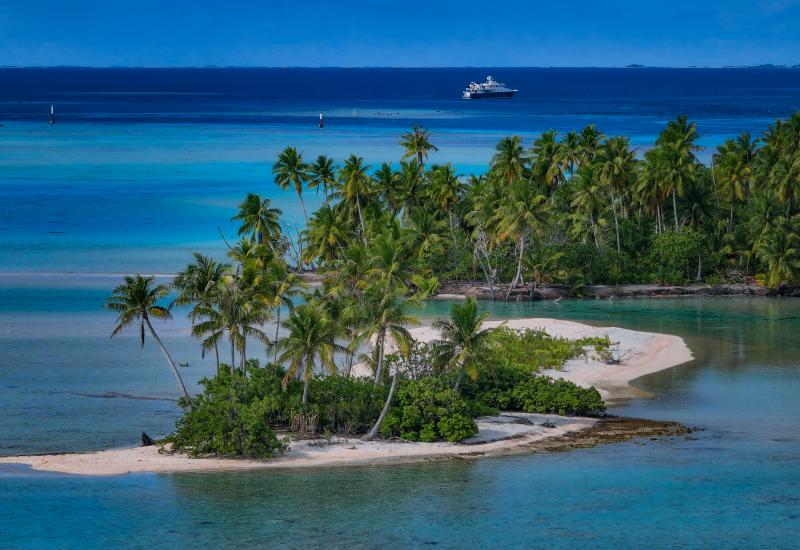Where to Go Scuba Diving in New Mexico
Although New Mexico is known for skiing and ballooning, it’s also been described as the scuba capital of the Southwest. Caves and mountains interrupt miles of arid shrubs and rocky landscape best seen in the early morning or evenings. Scattered among them are lakes and springs prime for dive exploration.

PADI StaffA guide to the best sites across the Southwest's scuba capital.
The whole family can enjoy diving Blue Hole and Perch Lake in Santa Rosa, a two-hour drive from Albuquerque. Blue Hole is a former fish hatchery that has been explored to its fullest. This recreational dive and snorkel destination is a spring-fed karst system with a small cave that is closed to diving. The coldest dive site in New Mexico, Blue Hole is a hotspot for training and swimming at elevation. It’s a vertical column of clear water where you can see the entire spring in one or two dives. A couple of minutes from Blue Hole, Perch Lake is often used as a training site because of its shallow depths and training plat- form. Divers here can find a sunken Cessna airplane and car. Perch Lake is also warmer than Blue Hole and far less crowded.
In southern New Mexico, Lea Lake and Elephant Butte Lake State Park are two off-the-beaten-path dive sites. Lea Lake, in Bottomless Lakes State Park, is an overlooked dive site with good visibility and mild temperatures. Cliffs surround the northeast side of the park, beneath which the deepest water—about 40 feet—can be found at this shallow site. After diving stop by the International UFO Museum and Research Center in nearby Roswell.
West of Lea Lake and two hours south of Albuquerque, Elephant Butte serves both as a dive site and a sightseeing destination, for a towering volcanic landform protruding from the water. Look for catfish, walleye and volcanic rock at this dive site, but be aware that visibility is low.
With a little planning, you can make this tour of New Mexico’s dive sites the ultimate road trip, pairing your desert exploration with national park adventure.
Dive Sites

Jennifer IdolVisibility in Blue Hole averages 80 feet, water temperatures range from around 62 to 72 degrees.
Bottomless Lakes State Park Endangered Pecos pupfish, schools of Mexican tetra and turtles inhabit Lea Lake, a little-known dive site at Bottomless Lakes. The park’s name is a mystery—at 30 feet deep, it certainly is not bottomless. Cliffs at this remote site add shade.
Blue Hole Obtain dive permits from the Santa Rosa Visitor Center, and get there early to avoid crowds at this renowned dive site. The Scuba Company rents all equipment and trains year-round in this 80-foot-deep spring. Intrepid divers enter from the elevated diving platform, but I prefer the easy shore entrance.
Elephant Butte Lake State Park Elephant Butte Lake is a deep reservoir northwest of White Sands National Park named for its defining volcanic core feature. Shore diving is open to divers, but visitors may also rent boats from the marina and dive directly underneath the butte. All divers must use flags.
Trip Tips

Jennifer IdolA walk through Carlsbad Caverns is worth adding to your dive trip.
Carlsbad Caverns National Park Enter through the natural entrance, where bats can be heard in the distance, and take the elevator down 750 feet to begin exploring the cave on foot. The sloping walk provides a better sense of the cave’s size and takes guests through uncrowded rooms of increasingly intricate cave formations. King’s Palace, in the main room of Carlsbad Caverns National Park, holds the most renowned formations. Some of the finest food I’ve enjoyed, such as homemade wine ice cream, is found in the town of Carlsbad at the Trinity Hotel and Restaurant.
White Sands National Park Formally designated in December 2019, this unique national park is an ever-changing landscape of shifting sands surrounded by mountains. The sandlike ground of the world’s largest gypsum dune field crunches as you walk, leaving hundreds of footprints visible. Some visitors hike the peaks and ride waxed sleds down slopes.
Guadalupe Mountains National Park Guadalupe Mountains National Park protects a Permian fossil reef and Guadalupe Peak, the highest and most picturesque peak on the Texas border. Extreme darkness here enables stellar night photography. When traveling or hiking in these desert areas, bring and drink plenty of water and avoid hiking midday.

Jennifer IdolThe spring-fed Blue Hole is a popular training destination. Dive permits are available at the Santa Rosa Visitor Center.
Need to Know
Conditions Visibility in Blue Hole averages 80 feet, while viz in the lakes typically falls between 5 and 30 feet; water temperatures in Blue Hole and Lea Lake range from around 62 to 72 degrees, with warmer temperatures elsewhere.
What to Wear A 5 mm wetsuit with a hood or drysuit.
More Diving Out West:










